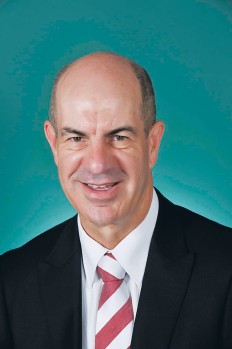
PUBLIC transport woes in Frankston and across the peninsula were top of the agenda at a Victoria First forum hosted by Labor MP Kelvin Thomson last weekend.
The federal member for Wills in Melbourne’s inner north launched Victoria First late last year as a way to argue Victoria’s “rapid population growth” should be halted to “safeguard and enhance Victoria’s way of life”.
The not-for-profit non-government organisation wants immigration to Australia capped “to the levels of the 1980s and 1990s”, a net gain of 70,000 instead of about 200,000 annually.
Mr Thomson said Victoria First believed in a multi-racial society and its views on immigration were not racist or xenophobic, but a means of protecting Victoria’s environment and liveability for future generations.
“We’re under people and population pressure no matter where it comes from,” he said.
Mr Thomson said about 60 people attended Victoria First’s public meeting at Frankston Saving Club last Saturday, 2 August.
Public transport advocate Ian Hundley was guest speaker. He outlined ways “the transport crisis in the Frankston area” negatively impacted on the peninsula’s economy, ecology and social cohesion.
Mr Hundley lamented successive state governments’ focus on roads projects, rather than public transport improvements which would benefit Frankston commuters travelling to Melbourne for work.
He said census figures showed 60,000 Frankston residents travel to work each day and said “a large proportion” of the 5.5 per cent who work in Melbourne would travel by train.
Mr Hundley noted only “about 0.6 per cent” of Frankston residents who travel to work would use the proposed Coalition state government backed East West Link, set to cost between $6-8 billion.
“According to [Premier] Denis Napthine, the East West Link is supposed to solve all our problems, with the possible exception of the common cold,” Mr Hundley said.
“The reality is, however, that there will be nothing left for the timely introduction of necessary transport projects in Frankston or elsewhere if the East West Link goes ahead.”
Mr Hundley also criticised Mr Thomson’s party, saying the state Labor opposition had declared the East West Link “a dud project” but had pledged to honour signed contracts if it won government at November’s state election.
“The Labor Party needs to have a hard look at itself and decide whether they are prepared to govern in the interests of the state or a select group of contractors.”
Mr Thomson said public transport in Frankston and the peninsula was just one subject discussed at the meeting.
He said the majority of attendees opposed the planned container port at Hastings and were not keen on the Bay West in Geelong alternative favoured by Labor either.
“Both options would involve heavy dredging of Port Phillip,” Mr Thomson said.
“A ‘super’ container port in northern Australia would be preferable from an environment perspective. Smaller ships could then transport cargo from there to existing ports around Australia.”
Victoria First noted Frankston’s population has been growing at an average of 1.46 per cent annually since 2003, adding an extra 16,436 residents over 10 years. The city’s current 134,924 population is predicted to reach 152,494 by 2036. Mr Thomson said this would place pressure on housing availability, prices, traffic and public services.
“The most successful and prosperous countries such as Finland, Switzerland and Denmark are those who control population growth,” he said.
“Frankston can become a more sustainable community by resisting population growth.”
First published in the Frankston Times
This article originally stated: ‘[Mr Hundley] said census figures showed 60,000 Frankston residents travel to Melbourne each workday and “a large proportion” would travel by train.’ In fact, Mr Hundley said 60,000 Frankston residents in total travel to work and 5.5 per cent travel to Melbourne each day. The article has been amended to correct the record.
